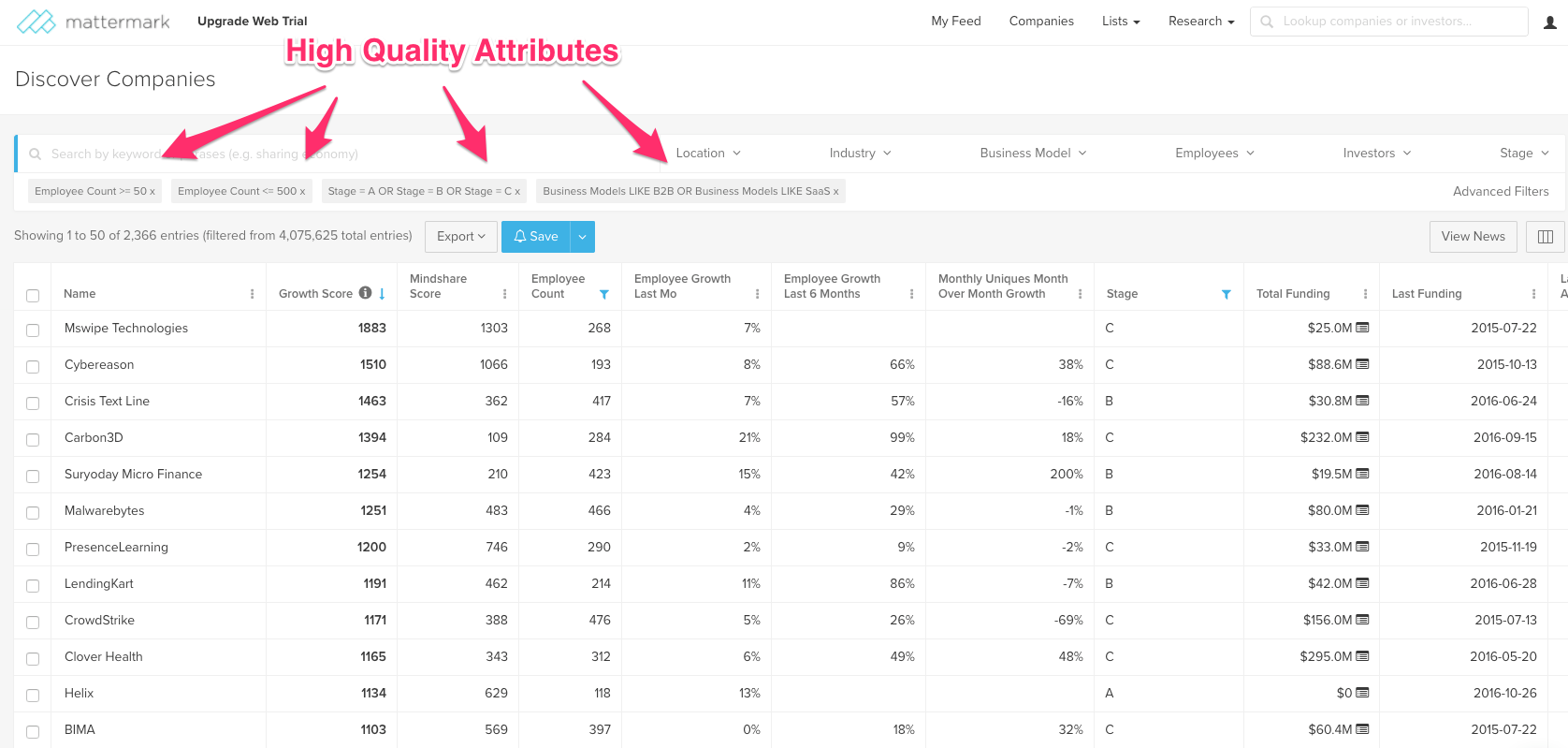Prospect. Qualify. Sell. Repeat.
The key to building any process is to break it down into its constituent parts. Each of these parts should be broken down into its “systematic series of actions,” then those actions should be broken down into their component actions. Continue breaking it apart and optimizing until you are at the elemental parts of the process.
Here we’ll go through the three main elements of your sales process, but this shouldn’t be where you stop. You need to continue on and on until you’ve optimized each and every step of your sales funnel.
Make Prospecting repeatable through research
If your prospecting phase is still effectively “cast a wide enough net and you’ll catch something” then your processes are falling at the first hurdle.
Introducing process into your prospecting can start laying the foundation for the rest of your sales funnel. The best way to do that is through shifting the emphasis on the prospecting stage from cold outreach to research. In our previous article on account-based sales, we set out the essential process for doing just this:
- Research your current customers—As you are looking for consistency in your customers, start with your current customers. Look for what connects your high-value customers, so that you can find these traits in your prospects.

- Build your target list—You can then use these attributes to build up a list of all potential customers that match this ideal customer profile.
- Identify internal prospects—Once you understand the companies, you can then find out about the people. Identifying the key decision-makers within your target companies means an increase in efficiency as you’ll only have to reach out to these individuals rather than across the entire organization.
- Reach out—Only at this point does your sales team start contact, but now armed with all the right information to sell to the prospects.
This is a massive increase in efficiency, as instead of reaching out to a large amount of low-value prospects based on only limited information, your sales team can invest their time in these high-value targets that you know will respond in the later phases of your sales cycle.
Make Qualification repeatable through questions
Whereas many reps can see the benefits of structuring their prospecting around a defined process, it is in the qualification phase that this starts to break down. Reps pride themselves on their ability to turn a lead into a full-blown opportunity, even if it is through lackadaisical qualification. They believe that even if the lead isn’t qualified now, they will be by the time they get to the later stages of the funnel.
It is because of this wishful thinking that the qualification phase can benefit most from a well-defined process. Reps need the extra guidance of defined processes here. Without a working process, you’ll end up with too many opportunities and not enough time and resources to devote to all. This will lead to fewer customers overall.
You need to disqualify aggressively and cross half your prospects off your list. Working out the best questions that do this is paramount to efficiency and continued sales success.
Your team needs to choose a qualification framework and stick to it. The exact one you choose is less important than adhering closely to it and constantly adapting to your own processes and needs.
For instance, if you go with InsightSquared’s CHAMP framework, your qualification questions might look like this:
- Identify Challenges—What objectives are you looking to achieve by solving this pain?
- Find the Authority—How are purchasing decisions made for products like ours and who is involved in looking at this solution?
- Determine the Money—What is your typical budget allocation process from when you need to invest in a solution like this that was outside of the original budget?
- Discover the Priorities—Do you have the time and bandwidth to begin implementation now?
There should be more questions, and each should be tailored for a) you and b) your prospect. But aligning closely with such a framework means that qualification remains consistent between reps so everyone knows what “qualified” means.
Make Opportunities repeatable through stages
Once an opportunity is into the later phase of your sales funnel, processes can easily go awry. In the rush to deal, reps (and managers) can push opportunities through the funnel quicker than is ideal.
The best way to bring repeatability into this part of your sales process is with defined sales stages. Again here, the exact stages are less important than deciding what they should be and being consistent. Consistency here in particular means two things:
- Each opportunity goes through every single stage—if a rep is particularly excited about a prospect, they can miss out on some of the initial stages. They might decide that the prospect is already interested in the product, so skip the “discovery” phase early on, only to find they weren’t reading that initial interest correctly. By setting in stone the idea that all stages need to be completed, it pushes reps to adhere to the process and produce better opportunities.
- The entrance and exit criteria for each stage is the same for each opportunity—the best way to make sure reps keep to each stage is to identify the important entrance/exit criteria for each stage of your funnel. For instance, the exit criteria for the evaluation phase might be that the prospect has been through a demo version of your software, or successfully used a trial version for a set period of time.
There is no one-size-fits-all sales funnel. You need to experiment and adjust to fit your buyer’s journey and your own company needs. But it is vital that you set out the specifics of each stage for your reps so that only the best, most consistent customers are passed through to the closed-won stage.
Become the Ted St. Martin of sales
Your reps don’t need to become the Steph Curry of sales. They need to become the Ted St. Martin of sales. People dedicated to the process. It’s great if you have those “rockstar” salespeople, but it’s even better if you have that process that makes any rep a rockstar.
We don’t think you should do away with your targets. But hitting targets is an outcome of building your process. It is the end goal of those directed, systematic series of actions. By focusing on those actions, the end takes care of itself. You can focus on those actions through experimentation and data. After every deal—won or lost—every month, and every quarter, you should look back and analyze, finding what you could be doing better. This process of defining your process is never over.
But you will get better and better at finding those great customers that become the foundation of your growth.
Also published on Medium.

